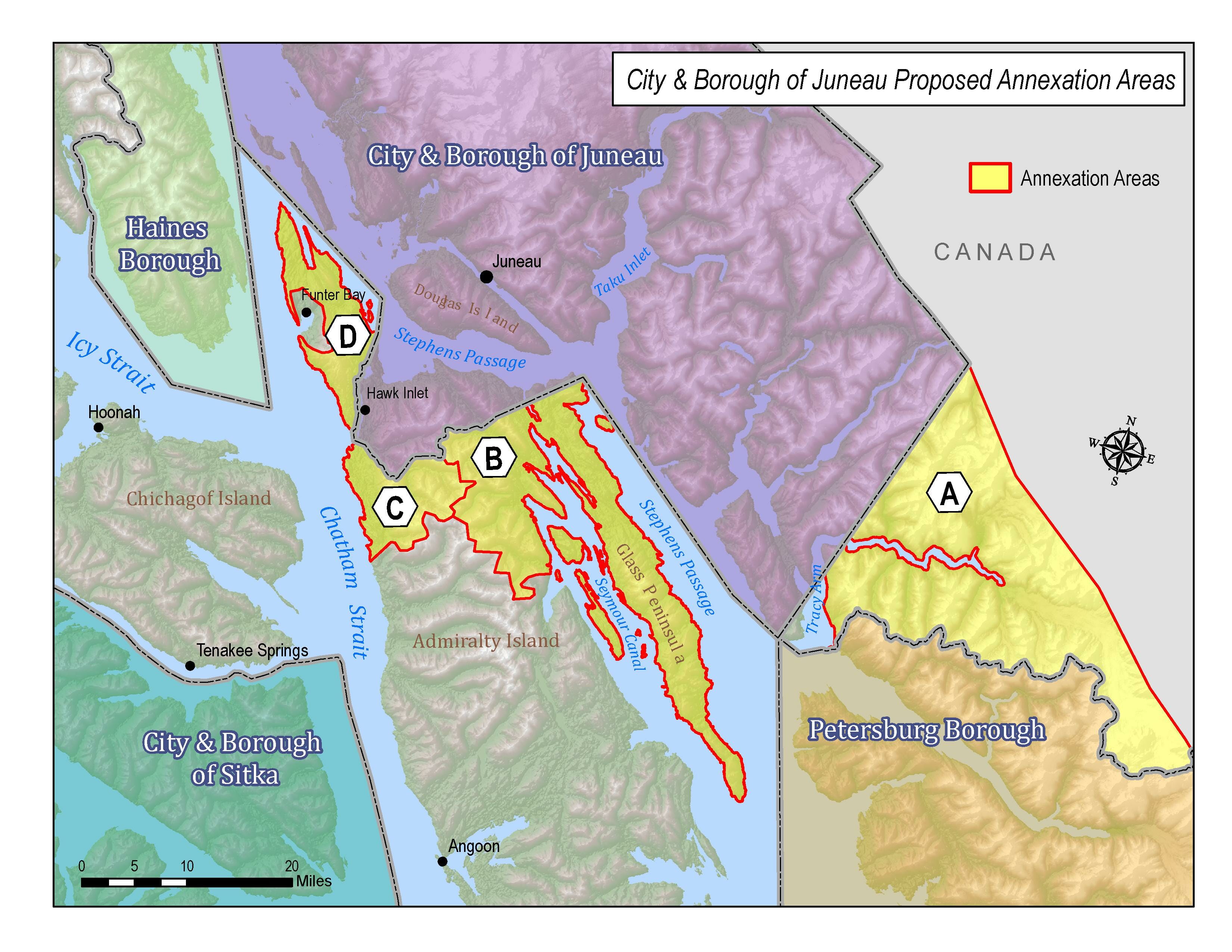
Public participation crucial to annexation process
On February 12, the City and Borough of Juneau Assembly took a small step toward expanding the current borough boundary to more closely mirror the model borough boundaries set out by the State of Alaska’s Local Boundary Commission. The process for annexing, or adding land, to a borough is long, thorough and detailed. Above all, the process, administered by the Local Boundary Commission, includes ample opportunity for the public to weigh in. As CBJ works on a petition to annex areas that are adjacent to current CBJ boundaries, public participation and public comment are imperative.
Annexation is a constitutionally-established means of fulfilling the purpose of Article X, Section 1 of Alaska’s Constitution, which is: “… to provide for maximum local self-government with a minimum of local government units, and to prevent duplication of tax-levying jurisdictions.” Annexation results in the extension of borough services, regulation, voting privileges and taxing authority to the annexed area. It does not change land ownership in any way, private land remains private, and federal and state land remain under those jurisdictions.
At this point in time, the Juneau Assembly has decided to petition to annex a triangular region on the mainland between Juneau’s southern boundary and the Petersburg Borough’s northern boundary (area A on the map); an area on Admiralty Island to the north of Hawk Inlet, including Horse and Colt Islands but excluding lands that lie with the watersheds that drain into Funter Bay (area D); an area south of the Greens Creek Mine that encompasses all lands that drain into Wheeler Creek and lands to the west of the Wheeler Creek basin that drain directly into Chatham Strait (area C); as well as Pack Creek, Oliver’s Inlet and the Glass Peninsula (area B). A northern portion of Admiralty Island, that includes Hawk Inlet, is already part of CBJ.
The Juneau Assembly is not petitioning to annex the City of Angoon, which is located far south and west of the areas CBJ is interested in; annexing Angoon has never been part of the discussion.
The state’s Local Boundary Commission (LBC) is the entity in charge of the petition process. It receives, reviews and makes decisions on annexation petitions. The LBC was created by the Alaska Constitution to ensure that arguments for and against proposals to create or alter municipal governments are analyzed objectively, and take areawide and statewide needs into consideration.
LBC rules and regulations require significant notice and opportunities for public comment. Prior to submitting an annexation petition for legislative review to the LBC, CBJ will prepare a draft of the petition, provide public notice and conduct a public hearing on the annexation proposal. Creating the petition is an involved process. Once a petition is submitted to the LBC, LBC staff members go through a detailed process with more opportunities for public comment before the LBC approves, amends or denies the petition. The proposal could then go to the State Legislature for final approval. The process of annexation is lengthy and includes multiple opportunities for the public to weigh in. At the end of the day, it is up to the LBC to make the determination that it feels is in the best interest of the public. CBJ has faith in this process and its outcomes.
